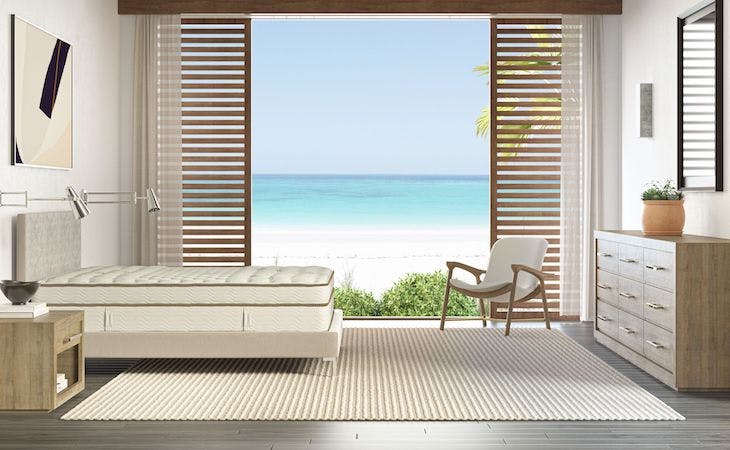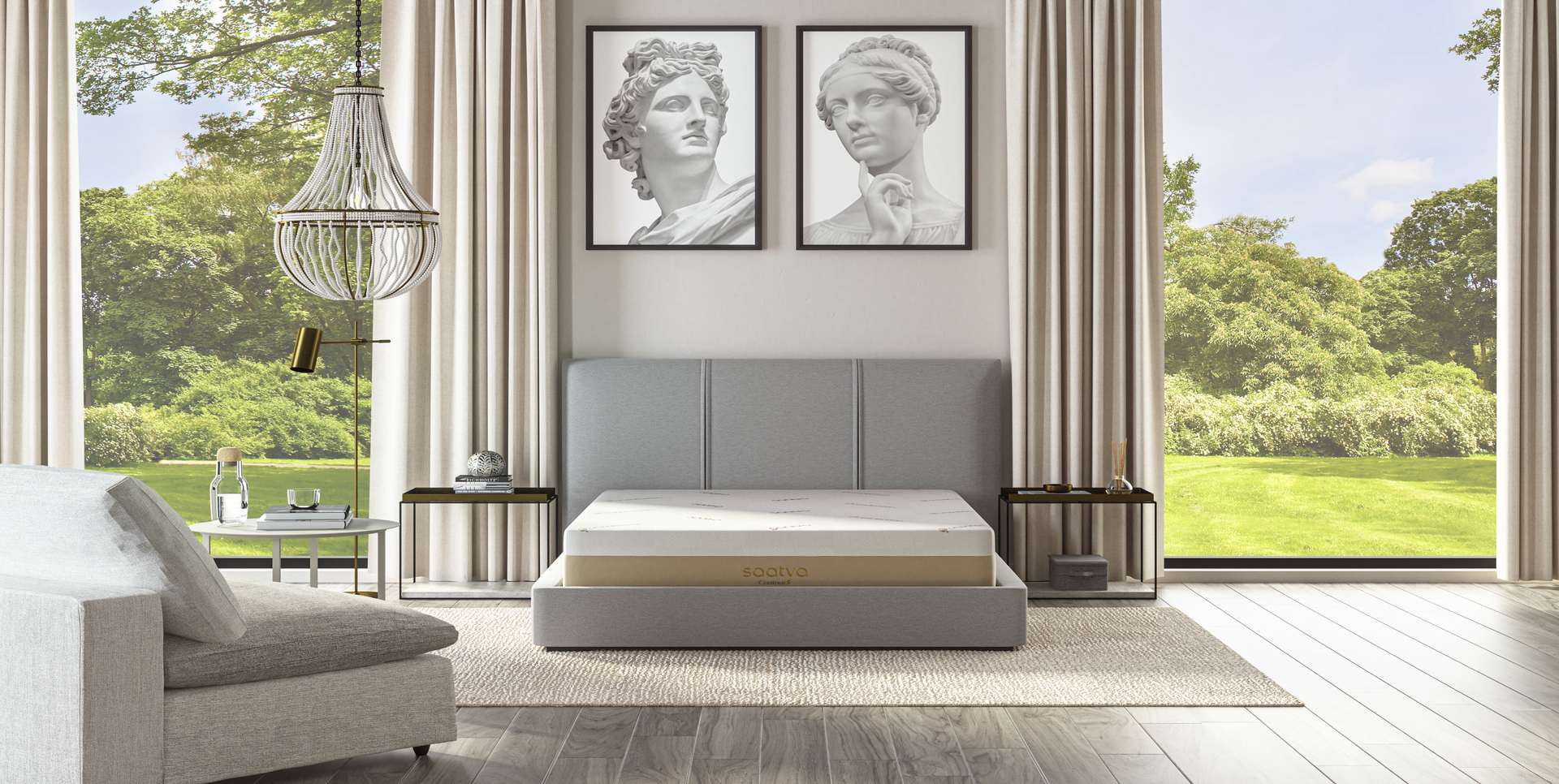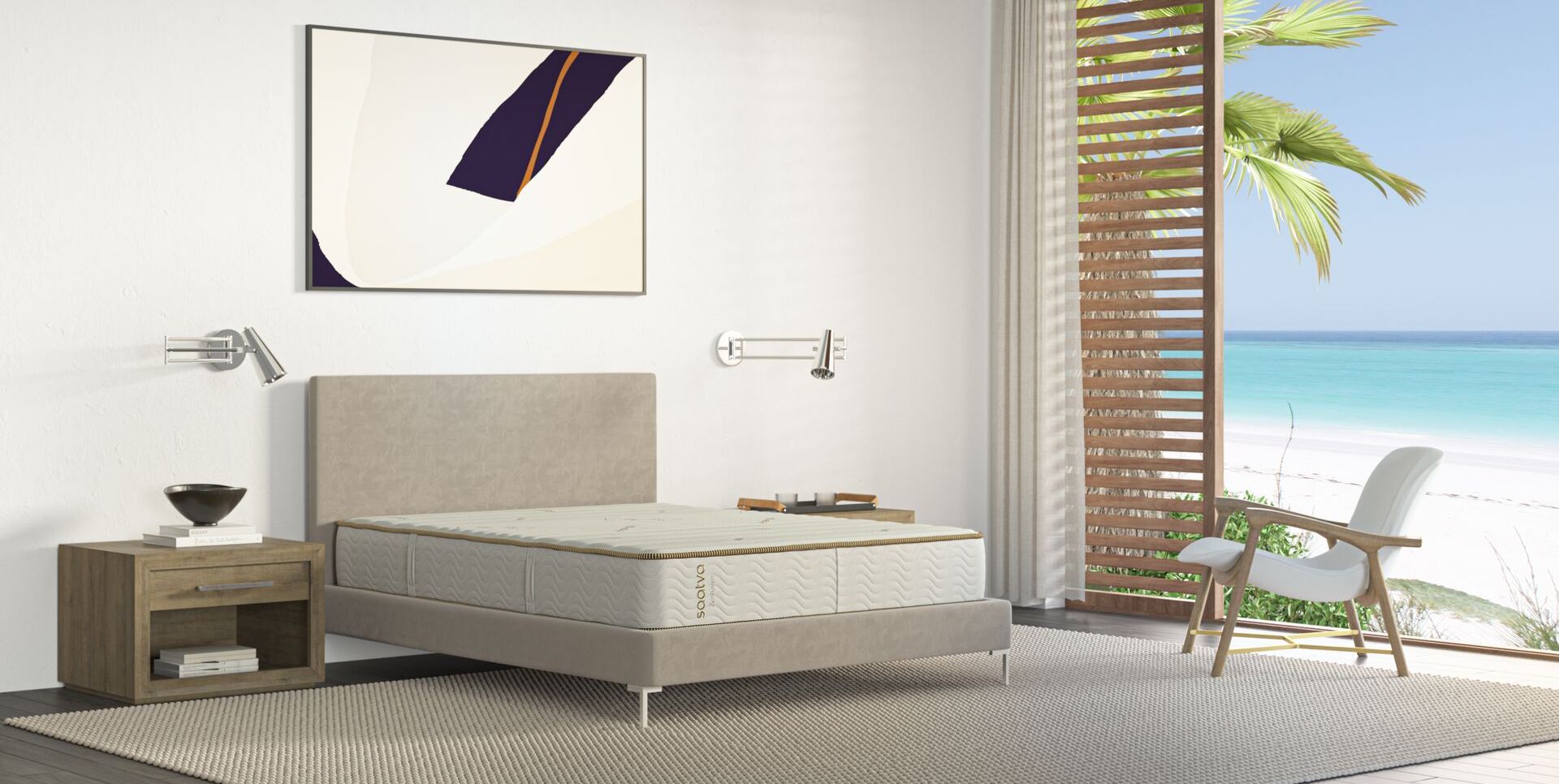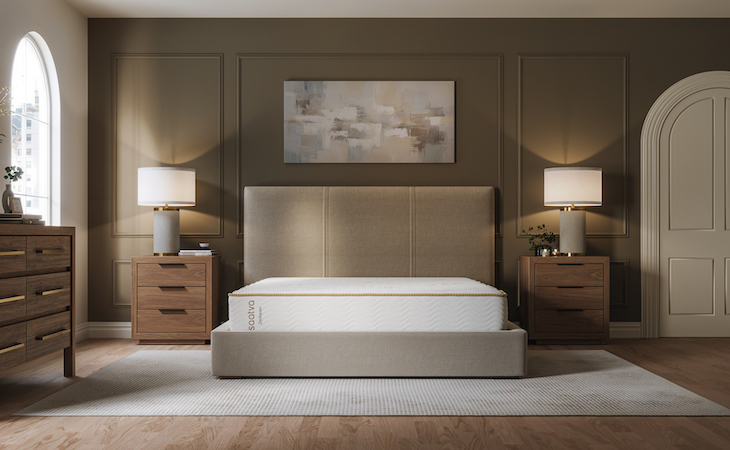There are quite a few factors you should keep in mind when determining which mattress size is right for you. These include the size of your bedroom, who will be sleeping in the bed, and even how tall you are.
Twin, full, and queen mattresses are three common standard mattress sizes—so there’s a good chance one of them will be right for you. If you have children or teens or live in a really small house, then a twin or full-size mattress is a great option. If you have more room—or sleep next to a partner—a queen is your best bet.
Is a twin, full, or queen right for you? Our twin vs. full vs. queen bed guide will help you determine just that.
Twin mattress size
A twin mattress (also known as a single bed) measures 38 inches wide by 75 inches long.
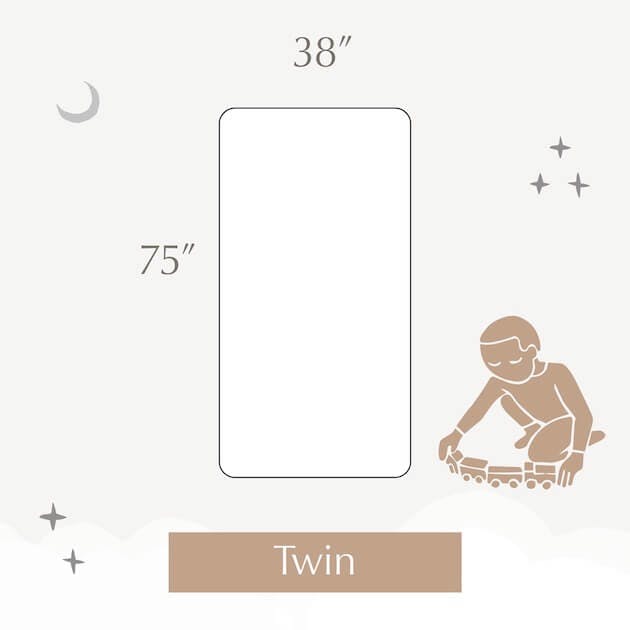
Pros of a twin
When would a twin mattress make more sense than a full or queen-size bed? Here are the top four reasons to choose a twin:
- A twin mattress is great for growing children. It’s an ideal size between toddler beds and the full-size mattress they may use as teenagers. It also fits nicely into kids’ rooms. “Twin beds are so fantastic for kids’ rooms because you don’t need much space for them,” says Prudence Bailey, founder and principal designer of Prudence Home + Design in Connecticut. “They can function as a bed or even a day bed.”
- Bailey adds that having two twin mattresses in a room is perfect for kids who love throwing sleepovers—or siblings who share a bedroom.
- A twin mattress size is versatile—it can be used in bunk beds, day beds, and for solo sleepers in studio apartments. (Keep in mind, your bedroom should be 7 feet by 10 feet at minimum to fit a twin-size mattress.)
- Since a twin mattress is the smallest mattress size, it naturally comes with the smallest price tag, and it’s a piece of cake to move.
Cons of a twin
Of course, a twin mattress isn’t without its drawbacks. Here are the biggest downsides to this mattress size:
- It’s too small for two. Given that a twin mattress is only 38 inches in width total, it doesn’t afford much space for two people.
- Because it’s only 75 inches long (which translates to 6 feet 2 inches), a twin-size mattress may not be long enough for taller teens or adults. If you’re over 6 feet tall, or you suspect your teen will grow, a twin XL might be a better option because it offers an additional 5 inches in length.
Full-size mattress
A full-size mattress (also known as a double bed) measures 54 inches wide by 75 inches long.

Pros of a full
Weigh these benefits of a full-size bed before deciding whether or not it’s right for you:
- Full-size beds offer an ideal situation for solo sleepers. If you live by yourself, a full-size bed will provide ample room.
- This mattress size is a natural fit in downsized spaces. Those who live in apartments or who have small bedrooms will find that a full-size bed is a good option. A full-size bed can fit comfortably into a bedroom that’s at minimum, 10 feet by 10 feet.
- Full-size beds offer more space than a standard twin for kids. Bailey speaks from her first-hand design experience, saying, “We use full-size beds a lot when designing kids’ rooms since it’s a bed that they won’t outgrow until they leave home.”
- They’re also usually less expensive than their larger counterparts and easier to transport than bigger mattresses.
Cons of a full
Full-size beds do have a few drawbacks. Here are the two main ones:
- They don’t provide adequate space for most couples. In a full-size bed, each person will only have 27 inches of space for themselves. “Size is the biggest downside, as most adults will find it too small to share,” says Bailey. That said, if you’re not physically large and don’t mind snuggling, it could be just fine. “If they are a cuddling couple, this is the size for them,” says Bailey.
- Since they’re not especially long, full-size beds aren’t a great option for tall folks. A full-size bed is just barely over 6 feet in length, so you’re looking at feet hanging over the edge of the bed if you’re a few inches over 6 feet tall. Taller teens will be better suited to a twin XL mattress, while adults should opt for a queen.
Queen-size mattress
A queen-size mattress measures 60 inches wide by 80 inches long.
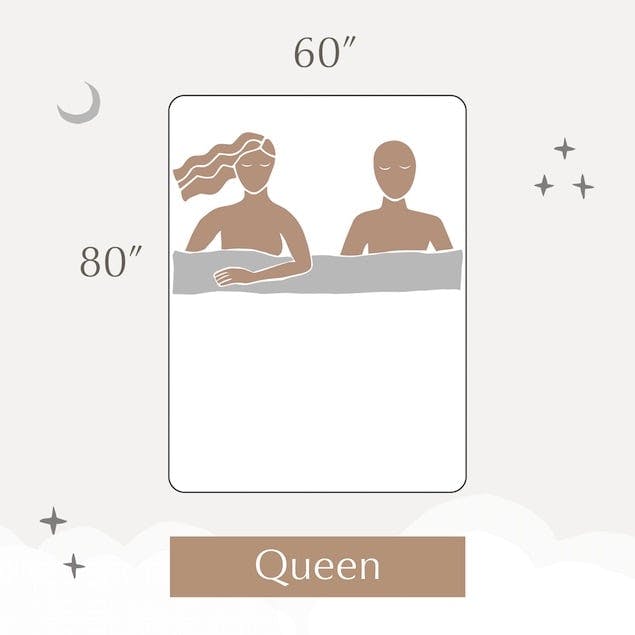
Pros of a queen
There are a lot of reasons to choose a queen size bed. Here are the top two reasons why should consider one for your bedroom:
- It’s versatile, making it an outstanding option for couples and solo sleepers alike. Each sleeper gets about 30 inches of space to themselves. This gives couples plenty of room to move around. “A queen-size mattress is ideal for many people because it offers generous sleeping room for a single sleeper, yet the size is still ample and comfortable for two people,” says Mary Brennan, interior designer and founder of House of Fine Design in New Jersey. If you’re a combination sleeper—someone who switches positions throughout the night—you should have enough room in a queen-size bed so you won’t disturb your partner.
- You’ll have enough room for kids and pets as well. Although a queen-size mattress isn’t quite as large as a king-size mattress, you should still comfortably be able to snuggle with your family.
Cons of a queen
Here are two downsides to getting a queen-size bed:
- Naturally, a queen-size bed doesn’t offer as much room for couples and/or families as a king-size bed. You’ll have 16 inches less width in a queen-size bed than you would in a king.
- If you have a very small bedroom, a queen size bed is still sizeable enough to cramp your space. You should only choose a queen-size mattress if your bedroom is at minimum, 10 feet by 10 feet.
Size comparison
Here’s how twin-, full-, and queen-size mattress dimensions compare:
Dimensions Twin Full Queen Width 38″ 54″ 60″ Length 75″ 75″ 80″
The bottom line: A queen-size mattress is ideal for couples and solo sleepers with a larger size bedroom, a full-size is great for solo sleepers and growing teens, and the twin is best for younger children or studio apartments occupied by one solo sleeper.
FAQs
Do two twins make a queen?
Two twins don’t make a queen. If you put two twin beds together, you’d get a mattress that was sized 76 inches wide by 75 inches long. A queen-size bed, on the other hand, measures 60 inches wide by 80 inches long.
Which is better: a full or a twin?
Neither mattress size is inherently better than the other. It all comes down to your sleeping arrangements. Full-size beds offer more room for solo sleepers and larger individuals, while twin beds are a good option for small children.
Is a full the same as a twin?
A full isn’t the same thing as a twin. A full-size mattress measures 54 inches wide by 75 inches long, while a twin-size mattress measures 38 inches wide by 75 inches long. That means a full-size bed is 16 inches wider than a twin.
Is a twin-size bed the same as a queen?
A twin isn’t the same as a queen. A twin-size mattress measures 38 inches wide by 75 inches long, while a queen-size mattress measures 60 inches wide by 80 inches long. That means a twin-size bed is 22 inches narrower and 5 inches shorter than a queen.
Find the best twin, full, and queen mattresses at Saatva
Saatva offers a wide range of high-quality mattresses in all standard mattress sizes, including twin, full, and queen.
All of our mattresses are handcrafted with premium materials to help you experience your most comfortable sleep. Plus, our mattresses come with a 365-night home trial and lifetime warranty.
Take our mattress quiz to find out which Saatva mattress is right for you.

